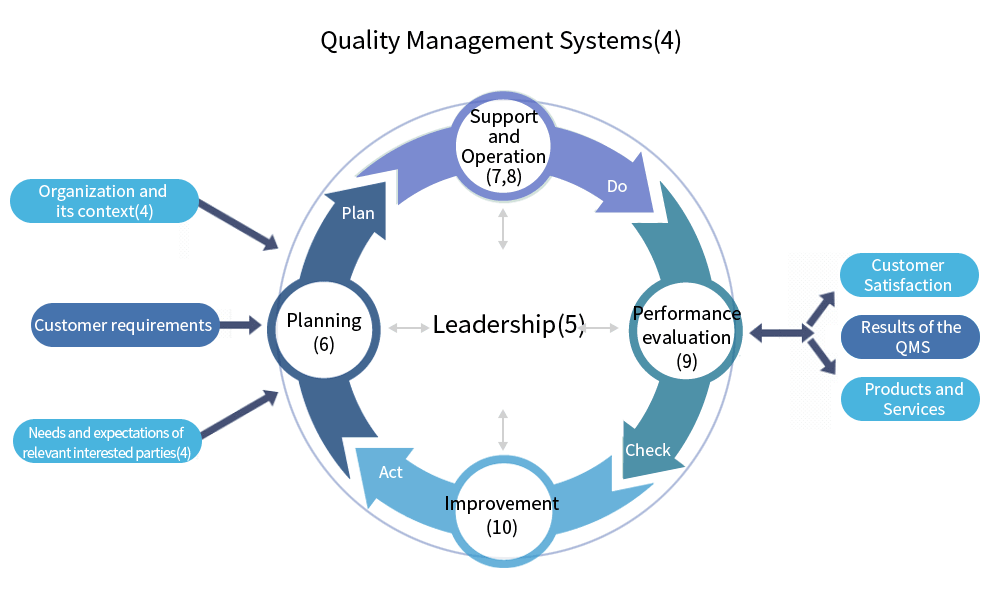ISO 9001 certification system?
This is a standard on Quality Management established by the International Organization for Standardization (ISO), which is a requirement to be recognized internationally that an organization has the ability to meet requirements. It is a system that pursues long-term growth and development of the organization by securing a competitive advantage through overall quality improvement of the entire company, improving customer satisfaction and enhancing organizational competitiveness.
Necessity
- Active and efficient means of preparing for changes in the domestic and overseas environment
- Respond to customer certification requirements
- Establishing a rational and efficient management system
- Enhancement of management system improvement
- Increase Productivity
- Expansion into international and domestic markets
- Prepare for Manufacturer's Liability (PL) Scheme
Expectation effect
- Increase the company's sales and profits by reducing technology accumulation and cost
- Improve the company's good image and improve trust through objective verification of management system
- Enhancing corporate competitiveness by improving management
- Respond promptly to changes in external environment through internationalization of management system
- Satisfaction of customers through defect prevention, wasteful removal and continuous improvement
Basic model

- Plan : Establish the required objectives and processes to achieve results in accordance with customer requirements and organizational policy
- Do : Execution of processes
- Check : Policies, objectives and products; monitoring and measuring processes and products related to requirements to report results
- Act : Take action to continuously improve process performance
Composition of standard requirements
Certification scope
- 01. Agriculture, forestry and fishing
- 03. Food products, beverages and tabacco
- 04. Textile and textile products
- 05. Leather and leather products
- 06. Wood and wood products
- 07. Pulp, paper and paper products
- 10. Manufacture of coke and refined petroleum products
- 12. Chemicals, chemical products and fibres
- 14. Rubber and plastic products
- 15. Non-metallic mineral products
- 16. Concrete, cement, lime, and plaster, etc.
- 17. Basic metals and fabricated metal products
- 18. Machinery and equipment
- 19. Electrical and optical equipment
- 20. Shipbuilding
- 22. Other transport equipment
- 23. Manufacturing not elsewhere classified
- 24. Recycling
- 25. Electricity supply
- 26. Gas supply
- 27. Water supply
- 28. Construction
- 29. Wholesale and retail trade; Repair of motor vehicles, motorcycles and personal and household goods
- 30. Hotels andrestaurants
- 31. Transport, storage and communication
- 32. Financial intermediation; real estate; renting
- 33. Information technology
- 34. Engineering services
- 35. Other services
- 36. administration
- 37. Education
- 39. Other social services





